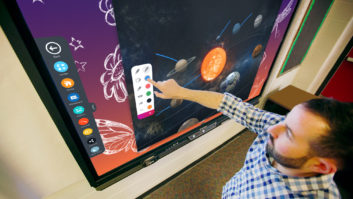Along with the corporate market, it’s arguably in education where we find the sector that had to adapt most rapidly to the impact of pandemic-related lockdowns. Suddenly – often overnight, in fact – schools, colleges and universities had to find a way of making remote learning work and keeping the syllabus on track. With staff inevitably falling along the way, too, it made for a fearsome brew of technological, logistical and – let’s not forget – emotional challenges.
In the Jan/Feb 2022 issue of Installation, an overview of the corporate AV market indicated that a long period of reviewing what had and hadn’t worked during the pandemic – and thereby converting some temporary solutions into more permanent approaches – surely lay in store. The same can also be said of education, with a general consensus among interviewees for this article confirming that nearly all educational establishments are seeking to maintain (and optimise) at least some elements of remote learning or seminar production.
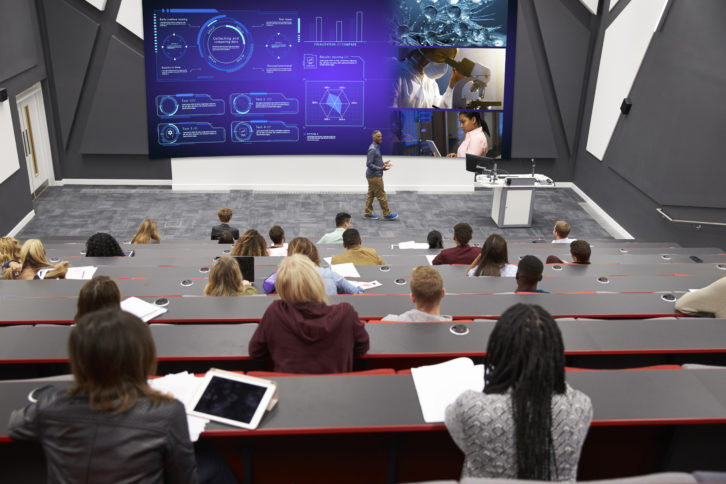
Hence it’s no surprise to find that solutions which make collaboration and conferencing easier to the layperson are in especially strong demand. But there are also signs that many facilities are looking to hit ‘refresh’ and undertake broader AV reviews to ensure they have all the capabilities they need now – and will likely require five or even ten years’ hence. Of course, there is a major caveat here that must be acknowledged: mounting economic turmoil and the inevitability of recession in many countries over the next few years places a question mark over budgets, especially in the public sector.
Still, at least for now, it appears that education – colleges and universities, in particular – is furnishing pro AV companies with an abundance of new projects. “There has never been a greater demand for quality AV in higher education, and the pandemic is one of the biggest catalysts for this,” says Madhav Jain, insights manager – education, business communication division, at Sennheiser, adding that the “added flexibility” of new technologies is now more widely acknowledged.
“The pandemic – aka ‘the biggest experiment into distance-learning the world has ever seen’ – rapidly accelerated the adoption of new technologies in this sector,” says Toni Chalk, managing director of AV systems integrator Strive AV, which recently rebranded from CDEC. Simultaneously, it had also became more evident that we had embarked upon schooling “a new generation of ‘digital natives’; children and young adults who are extremely familiar with interactive and immersive technologies, touch screen interfaces, and digital communication since birth.”
Rob Smith, senior director integrated systems sales at Shure, also highlights the impact of recent events on new technology adoption: “We have seen an enormous increase in interest in our audio solutions from the education sector in the last few years, which is definitely partly due to the pandemic and the need for remote teaching. However, the discussions about remote and hybrid learning formats already existed before Covid hit us. We believe this accelerated a trend rather than creating a completely new market, and the fact that we knew this trend was coming allowed us to help our education customers adapt faster and more easily to the new teaching model.”
With schools and colleges also needing to utilise technology to minimise their use of energy and reduce expenses, it’s not difficult to see why this is continuing to be such a transformative period for AV in education.
FLEXIBLE LEARNING
It hardly needs stating that – perhaps more than any other sector – education is not conducive to a ‘one size fits all’ methodology. Every school or college’s requirements will be different, shaped by factors such as size, attendance patterns, educational remit, and the wishes of parents, governors and administrators. Nonetheless, we are on fairly safe ground to state that enabling flexibility of learning – regardless of the location of pupils or staff – is now a commonly-shared priority.
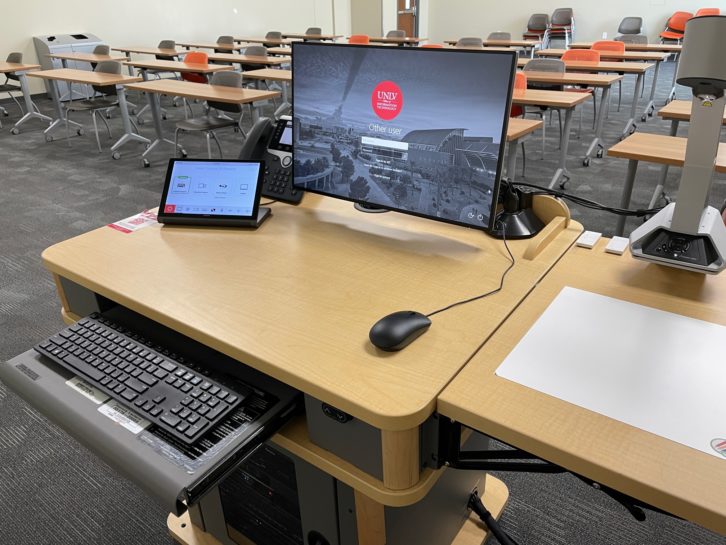 Recalling the dramatic impact of the pandemic and the need for educational establishments to “come up with new and creative ways to continue their curriculum and lesson plans remotely”, Philips Professional Display Solutions (PPDS) international key account director Frank Trossen continues: “This is where schools are continuing to invest heavily into technology that allows for that distance/hybrid learning environment, both in and out of the classroom. Technology such as laptops and Chromebooks, interactive panels, cameras and microphones, and even in some cases internet access for underprivileged students are all – and will continue to be – crucial components.”
Recalling the dramatic impact of the pandemic and the need for educational establishments to “come up with new and creative ways to continue their curriculum and lesson plans remotely”, Philips Professional Display Solutions (PPDS) international key account director Frank Trossen continues: “This is where schools are continuing to invest heavily into technology that allows for that distance/hybrid learning environment, both in and out of the classroom. Technology such as laptops and Chromebooks, interactive panels, cameras and microphones, and even in some cases internet access for underprivileged students are all – and will continue to be – crucial components.”
Having a standard baseline for accessing classes and lectures could hardly be more vital. “Educational campuses need to ensure that students can learn and engage from different locations,” says Chalk. “Providing BYOD connectivity to any device, enabling an unlimited number of users to collaborate by simultaneously sharing content, desktops and application windows – all are key considerations for a healthy digital transformation strategy.”
DIGITAL TRANSFORMATION
At the risk of over-simplification, the implementation of digital transformation is tending to encompass investment in both hardware (eg microphones, screens and devices) and software (management platforms and collaborative solutions) that can make lessons more seamless and accessible. For lecture theatres, capturing content for live streaming and subsequent viewing is a strong recurring theme. Moreover, it is increasingly clear that the cloud is providing the additional flexibility that schools and colleges are craving, as well as giving easier access for integrators and partners to access and troubleshoot systems.
Installation invited its interviewees to pinpoint the precise AV-related targets of attention at the present time. For Judy Zuo, VP marketing at IP video products and encoding solutions company Kiloview, the development of the education industry starts from the recording of each lecture or class. “[Hence] it will need devices to capture the presentation as well as the video of teachers and students,” she says, adding that also in demand are solutions for centralised monitoring and saving, or uploading to VOD platforms.
Meanwhile, it is clear that many schools and colleges are actively seeking combined platforms that can provide flexible educational options. Chalk remarks: “Technologies that enable effective hybrid learning – such as UC solutions, PTZ cameras, premium microphone arrays and in-room audio – are now being brought together into all-in-one solutions to provide a high quality experience for all participants.”
For Shure, Smith also highlights the impact of hybrid teaching applications. “While many of our existing products are equally at home in a classroom, lecture hall or corporate space, there are specific features such as voice lift or collaboration with other communication platforms while using our MXA Ecosystem [networked audio solutions] that dramatically enhance the education experience in the hybrid and remote teaching model,” he says. “We are also seeing success with our Stem [conferencing audio ecosystem] in smaller education installations, and we have new products in development to directly address the needs of teachers and lecturers.”
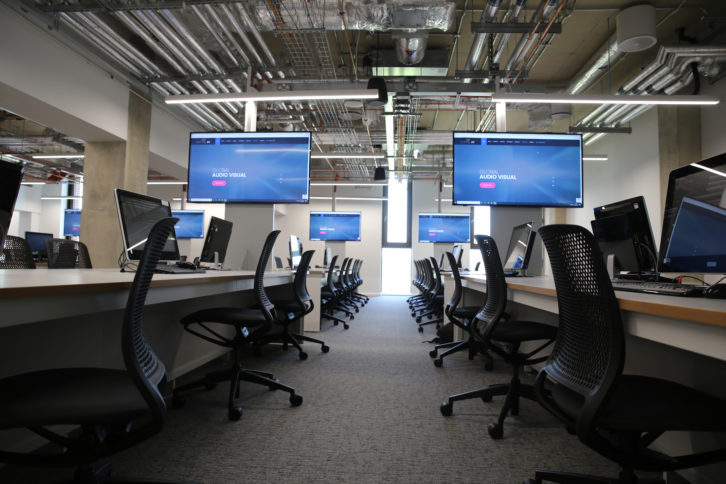 This trend towards unification of technologies is one to which Lightware Visual Engineering can happily attest. As VP education Roger Takacs confirms, education is now a rapidly growing market for solutions such as its Taurus UCX, which is a universal matrix switcher designed to tackle the common challenges of meeting rooms and collaboration environments.
This trend towards unification of technologies is one to which Lightware Visual Engineering can happily attest. As VP education Roger Takacs confirms, education is now a rapidly growing market for solutions such as its Taurus UCX, which is a universal matrix switcher designed to tackle the common challenges of meeting rooms and collaboration environments.
“We already had Taurus out in the market and doing very well in corporate [when the pandemic struck],” says Takacs, adding that “demand soon started to rise in education as well, [with the result that] we have now pinpointed it as a key market.” With USB-C connectivity, the Taurus platform’s ability to share content, switch USB hosts and control the chosen environment continues to resonate with an education market that is no longer “only about the students in the room”, but also those in remote locations, meaning that colleges need to be able to offer hybrid “as much as possible”.
Among those to have invested in Lightware solutions recently are London Business School and Edinburgh Napier University, both of whom “have leveraged the BYOD capability inherent in the Taurus UCX switcher to remove any challenges that lecturers and AV-IT staff are likely to have in the hybrid learning environment.”
FAST CHANGE
The introduction of some technologies that began well before the pandemic – such as higher-quality displays for lessons and wayfinding – is also continuing at speed. Trossen identifies digital signage, large format video walls and dvLED solutions as being among the most popular.
He explains: “The need for, and the benefits of, communicating information directly to students across campuses make this a huge initiative right now, so schools are installing displays to ensure important messages and information can be clearly seen by the students and staff in high traffic areas. In addition, the role of in-class displays, such as the Philips E-Line interactive series, will help to provide opportunities to allow students – whether in the class, isolating at home, or even on specialist sport placements, for example – to be able to join in with lessons and collaborate with tutors and their classmates.”
Chalk also highlights the importance of the latest visual solutions: “High-resolution projectors and large-format displays that show the minute detail of every image and piece of content are now essential for ensuring all students – whether physical or remote – can interact and engage with the subject matter in the same way. Interactive displays can play a useful role here. Most are touch-enabled and jump into ‘ready mode’ with a simple tap, saving unnecessary set-up time. They also integrate with the most popular video conferencing software apps, such as Zoom and Microsoft Teams, allowing educators and students to easily connect and share ideas no matter where they are situated.”
Sennheiser’s Jain highlights cloud migration and AV-over-IP as the headline developments. “The adoption of cloud-based systems or services is by far the most advanced trend in pro AV in higher education, as it not only affects pro AV, but other technologies deployed or planned across the campus,” he says. “However, cloud-based services in AV still have some way to go before they become mainstream.” With this in mind, “universities should consider investing in ‘sandbox’ rooms to test the systems early on to plan future AV technology investments.”

In addition, Sennheiser has registered a “steady rise” in deployment of AV-over-IP based solutions, making installation and management of devices much easier across the campus. “[Finally], as per a recent 2022 Educause Horizon Report, AR/VR and AI based systems will see a growing demand, especially for improving the overall student learning experience,” adds Jain.
Not surprisingly, the increasingly integrated nature of education solutions is leading to more strategic partnerships between technology providers. It’s a trend which, says Chalk, is “further strengthening the professional tools available for hybrid learning. Platforms such as Blackboard and DisplayNote Launcher are being integrated with video-conferencing tools such as Zoom, facilitating real-time annotation and group ideation to make the creative process even more productive for students.”
There is also another reality that schools and colleges are having to adjust to – unpredictable and often escalating costs related to energy consumption, maintenance and general operations. So it’s to be expected that solutions which can help educational facilities reduce energy consumption and provide a wealth of data around that – including as part of longer-term decarbonisation strategies and reporting processes – are also tending to be part of new investment conversations.
Trossen comments: “With rising energy costs being experienced globally, remote management of display fleets – allowing facilities staff to ensure displays are powered down when not in use – as well as videoconferencing software [so] visitors can join classrooms remotely, [yielding] the potential to reduce both fuel and time costs, are becoming key considerations.”
ENERGY USAGE
Monitoring energy usage – and thereby gaining data that allows further savings to be identified – is increasingly important to schools and colleges.
This is confirmed by a conversation with Jonathan Mangnall, managing director EMEA at Utelogy, whose eponymously-named software platform enables users to manage an entire AV estate under a single pane of glass, regardless of manufacturer. Making it possible to control different aspects of your AV infrastructure, view all device metrics, and gain data on energy usage, Utelogy now has a fast-growing customer base in education.
Utelogy, says Mangnall, “does make it possible to gather extensive data on power consumption, for example in terms of a comparison between when different items of equipment are on or off.” The resulting wealth of statistical information means users can have a “much clearer overview of their energy consumption” – and, therefore, enact behavioural changes as a result.
More generally, Utelogy is resonating with a sector which is now more concerned with the challenges of management, monitoring and control. “And then there is the whole issue of organisations wanting to improve efficiency and potentially do more with less people,” adds Mangnall. “So there is an appetite for insight, data and understanding how systems are used and by whom, that has really been driven by the pandemic.”
Mangnall also agrees with the suggestion that – after investing in high-efficiency LED lighting and more controllable heating – an overarching management platform that supports energy efficiency now constitutes “a very logical move” for many schools and colleges.
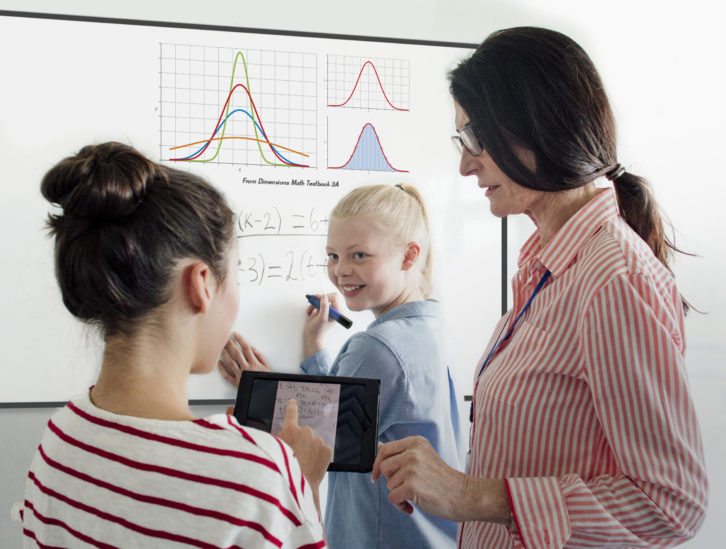
However fast-moving and thereby challenging the market might be, there is a commonly voiced view that education is one of the most communicative and constructive in terms of providing feedback and requests for new features. Takacs is not alone in stating that education customers will often “have done a lot of the research themselves” and will therefore commence any new project with a good level of background knowledge.
“They are not afraid to tell you what they think or what they need, and in a 20-minute conversation you can often found out all the ‘pain points’ they have now and what they are likely to require [in the future],” he says, indicating that their laser-sharp focus is not surprising given the stakes involved: “Whatever happens they have to keep those classrooms and lecture theatres up and running.”
Technical teams at schools and colleges, says Mangnall, “can often have great technical knowledge”, although it’s those that keep up a solid dialogue with their teaching staff that are best-positioned. “The feedback that comes from lecturers about their experience of using technology is all-important,” he adds.
MOVING TARGET
From a vendor and partner perspective, the awareness that education technology is more of a moving target than ever is leading to some very helpful initiatives. Notes Chalk of a current Strive AV scheme: “To support our clients in making AV an investment priority, we’re currently running a Buy Back Scheme for schools, colleges and universities, offering cash-back for old classroom display equipment when upgrading facilities.”
As Trossen points out: “No one could have foreseen or predicted the impact the pandemic had on the world, and we don’t know what’s around the corner.” Now more than ever, that observation rings true. But there are plenty of signs that education will remain a key market for many vendors for the foreseeable future.
There is even reason to believe that some of those educational professionals previously less than enthusiastic about the new ways of teaching have begun to change their tune. Says Jain: “Interestingly, many of the teachers who hesitated to embrace the new technologies before the pandemic are now some of the biggest advocates – willing to try new AV and other tech solutions that can make their classes more interactive and fun.”
